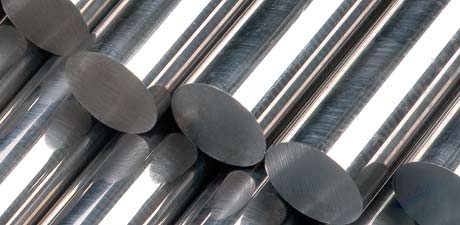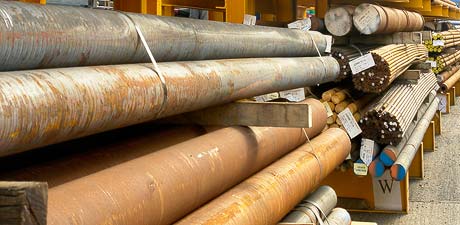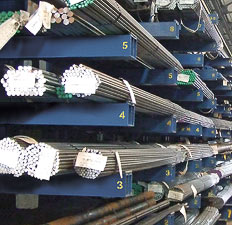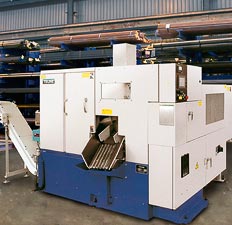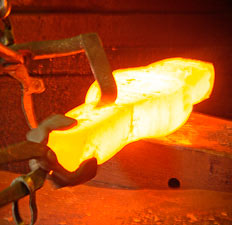Technical Data
Metallurgical Terms
Hardness.
Signifies, in general, resistance to deformation. It is usually measured by determining the resistance to indentation, as in the Brinell, Vickers, Rockwell and Shore tests. The values of hardness obtained by the different methods are to some extent related to each other, and to the ultimate tensile stress of non-brittle metals. In Moh’s scale comparative hardness is determined by testing against ten standard minerals: (1) talc, (2) gypsum, (3) calcite, (4) fluorite, (5) apatite, (6) orthoclase, (7) quartz, (8) topaz, (9) corundum, (10) diamond. Thus, a mineral with ‘hardness 5’ will scratch or abrade fluorite, but will be scratched by orthoclase.
Hardometer.
An instrument for measuring hardness by the indentation method.
Heading.
An upsetting process used to form rivet, screw and bolt heads from wire or rod.
Heat.
(a) A form of energy which when given to a body raises its temperature.
(b) The steel melting operation from the charging of raw materials to the tapping of the molten metal.
(c) The batch of steel produced by a single melting operation.
(d) In forging, the period of working before reheating becomes necessary.
(e) The amount of forging stock heated up at one time.
Heat Treatment.
A process in which steel in the solid state is taken through one or more temperature cycles for the purpose of obtaining certain desired properties. Heating for the sole purpose of hot working is excluded from the meaning of this definition.
High Frequency Induction Furnace.
This is essentially an air transformer in which the primary is a water-cooled spiral of copper tubing, and the secondary the metal being melted. Currents at a frequency above about 500 cps. are used to induce eddy currents in the charge, thereby setting up enough heat in it to cause melting. The electrical forces operating in the high frequency furnace keep the charge moving rapidly in a vertical plane, and the steel is, therefore, effectively stirred. This stirring ensures homogeneity in the melt and prevents gravitational segregation. The slag being a bad conductor of electricity is not heated by induction and, therefore, depends almost entirely upon its intimate contact with the metal for maintenance of its temperature. Partly because of this it is difficult to refine steels as in the arc furnace, and the process is, in effect, one of remelting. In this respect it is analogous to the crucible process, although, by generating the heat in the charge, the possibility of contamination of the metal from furnace gases is avoided.
High Speed Steel.
A high alloy steel, capable of retaining a considerable degree of hardness at a low red heat, and hence can be used in high speed cutting operations. It usually contains 12-22% tungsten, 4% chromium, up to 1% carbon, and varying amounts of other elements (vanadium, cobalt, etc.). Part or all the tungsten may be replaced by half its weight of molybdenum.
Hobbing.
(a) A process for generating gear teeth by using a rotary tool with cutting teeth set in the form of a helix. The hob and the work piece rotate so that the teeth of the hob and the teeth cut in the gear are in mesh.
(b) The formation of an impression in a soft die by means of a hard master die. The soft die is subsequently hardened and used to produce replicas of the master die.
Hollow Forging.
A method of producing hollow bodies, e.g., steel tubes or pressure vessels, in which a comparatively small hole, trepanned or pierced in a solid forging, is expanded on a mandrel under a forging press or on a becking bar.
Homogenizing.
A process of heat treatment at high temperature intended, by means of diffusion, to decrease segregation.
Hooke’s Law.
This states that ‘within the limits of elasticity the strain produced by a stress of any one kind is proportional to the stress producing it’. The stress at which a material ceases to obey Hooke’s Law is known as the limit of proportionality.
Hot Quenching.
A process of cooling in a medium, the temperature of which is substantially higher than room temperature.
- < Previous
- 1
- 2
- 3
- Next >


